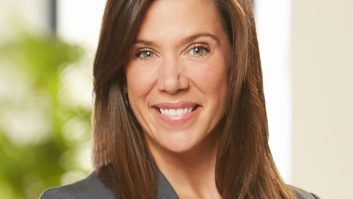As goes Best Buy so pretty much goes the CE industry, many have said over the years.
That’s why the mood was so somber a scant two Christmases ago, when pundits were openly asking when, not if, Best Buy, and possibly all big-box brickand- mortar chains, would go the way of the dinosaur.
At the time, the No. 1 CE retailer was bleeding red ink, relinquishing market share, and was increasingly seen as little more than a showroom for online-only rivals. Its image as a fading star was further burnished by a Wall Street Journal blogger whose tale of an overpromised Black Friday doorbuster took on a magnitude far greater than the isolated incident itself.
To make matters worse, an impropriety by CEO Brian Dunn, and the failure of founder/chairman Dick Schulze to disclose it, would soon leave Best Buy without its two most senior execs, and an effort by Schulze to regain control of the company would leave it roiled in further disarray.
All this was set against the backdrop of the global recession, and retail and vendor consolidation within an ailing CE industry.
Enter Hubert Joly, a debonair turnaround expert who learned his craft at McKinsey & Co. and proved his skills as CEO of Vivendi and Carlson, parent of the Radisson hotel and TGI Fridays restaurant chains. Though initially criticized for his lack of retail experience when he was named CEO of Best Buy, Joly passed his first critical test in November of last year when he presented his sweeping turnaround plan, dubbed “Renew Blue,” to a cynical audience of Wall Street analysts and media.
The strategy, which echoes a template he created at Carlson, calls for dramatic cost savings by thinning management’s ranks, renegotiating leases and supplier contracts, and streamlining the supply chain; pouring more resources into store-level training and a website overhaul; remerchandising the stores’ sales floors with more profitable product categories; closing unproductive offshore gambits; and living up to the company’s name on pricing. (At his first shareholders’ meeting the following spring, Joly responded to a question on how he intends to be price competitive by stating, “Our strategy to be price competitive is to be price competitive. The name is on the building. We have to be the best buy.”)
Observers liked Joly’s easy manner and his ability to reduce Best Buy’s seemingly insurmountable problems down to a handful of actionable bullet points. He was also lauded for pulling celebrated Williams-Sonoma finance whiz Sharon McCollam out of retirement to help lead a new dream management team, and for later extending Schulze an olive branch – the honorary post of chairman emeritus – after his takeover attempts were foiled. So while the jury was still out on Joly and Best Buy, he managed to buy the company some time.
Wall Street didn’t have to wait long. By August the company turned a major page with a surprise second-quarter earnings increase that stunned investors and silenced critics. The 2,000 percent-plus profit spike sent Best Buy’s stock up sharply, contributing to a three-fold increase this year and boosting shares of smaller big-box chains h.h.gregg and Conn’s in its wake.
But beyond the numbers, observers were wowed by Joly’s ability to make good on his turnaround promises under the Renew Blue banner. As Janney Montgomery Scott retail analyst David Strasser noted, “They are gaining share across categories and from virtually everyone in the space. We believe a re-energized sales force, a more optimized floor and strong store-level leadership are all driving better close rates and more Blue Shirt enthusiasm, which is driving increased market share across the store.”
Also adding to the excitement was the acclaimed opening of Samsung-staffed in-store shops chainwide, which would soon be followed by dedicated Microsoft departments and Google kiosks.
More recently, the momentum carried into the third quarter when cost controls and improved operational efficiencies returned Best Buy to profitability for the period. Despite flat revenues and comps, which were impacted by offshore operations, and a profit warning from McCollam as the company prepared to do battle on Black Friday, online sales were up 15 percent on improved website functionality; annualized costs were cut another $115 million, for a total of more than half a billion dollars; and another $100 million was saved in new supply-chain efficiencies.
Despite a stock hit on the profit warning, analysts remained bullish. “New management is on top of the situation,” wrote Wolfe Research’s Aram Rubinson, and Credit Suisse’s Gary Balter reminded investors that Best Buy is fighting a long-term war in which “the trend is moving in the right direction and management appears to be making the right moves to improve future results.”
Now, 16 months into Joly’s tenure, the world seems a more hospitable place for Best Buy and the CE industry, earning him the title of TWICE Newsmaker of the Year.












